Feature Article Central & Eastern Europe Today 1

The region is characterized by “relatively low-cost labor force,” “industrial strength,” and “quality of human resources,” leading to the creation of a huge automotive supply chain from the 1990s.

Reflecting the high level of math and science education, the software industry has been developing since the 2010s, giving birth to numerous startups.

Suffering from soaring energy prices since Russia’s invasion of Ukraine, momentum for environmental measures continues to grow.
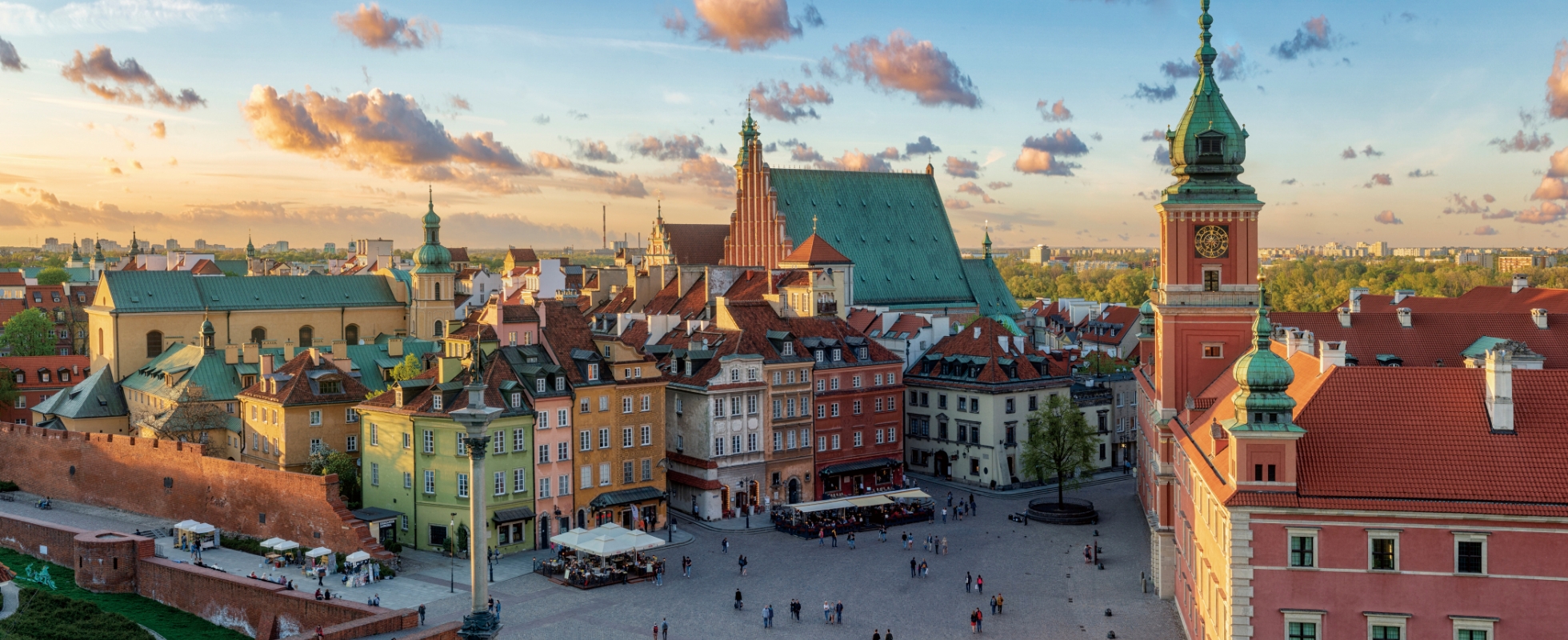
Repeatedly destroyed and reconstructed, then finally restored after the end of World War II as the Historic Centre of Warsaw, the old townscape of the Polish capital symbolizes today's Central and Eastern Europe, which is venturing into new fields while always respecting its history.
The region’s economy has tripled in the two decades since accession to the EU, with a strong industrial manufacturing sector, including automobiles
From 1989 through 1991, one CEE country after another transitioned away from socialist economic regimes. “There may be those in Japan who still carry an image of the impoverished region of that time. However, the situation has changed dramatically, especially from the 2000s when many of the countries joined the EU,” explains IMAI Minami of the JBIC Representative Office in Paris.
Various definitions exist for “Central and Eastern Europe,” but here it refers to 12 countries (see the map on the below): the 11 countries that joined the EU over the 10 years from 2004 through 2013, with the addition of Austria (joined the EU in 1995), which historically has much in common with these countries.
The Representative Office in Paris covers all of continental Europe, including the CEE countries, and French-speaking Africa, but “CEE is where the action is now,” says IMAI. Working quickly and agilely, she herself has visited 6 out of the 12 countries over the three years since assuming her post—11 if private visits are counted.

IMAI Minami, Representative, during the interview at the JBIC Representative Office in Paris.
In this article, “Central and Eastern Europe” refers to the 12 countries indicated in the map. In 2015, these 12 countries, which are surrounded by the Baltic Sea, Adriatic Sea, and Black Sea, established the “Three Seas Initiative” to strengthen cooperation within the region. With an overall GDP of about USD 2,417.7 billion, its presence in the EU is also increasing.
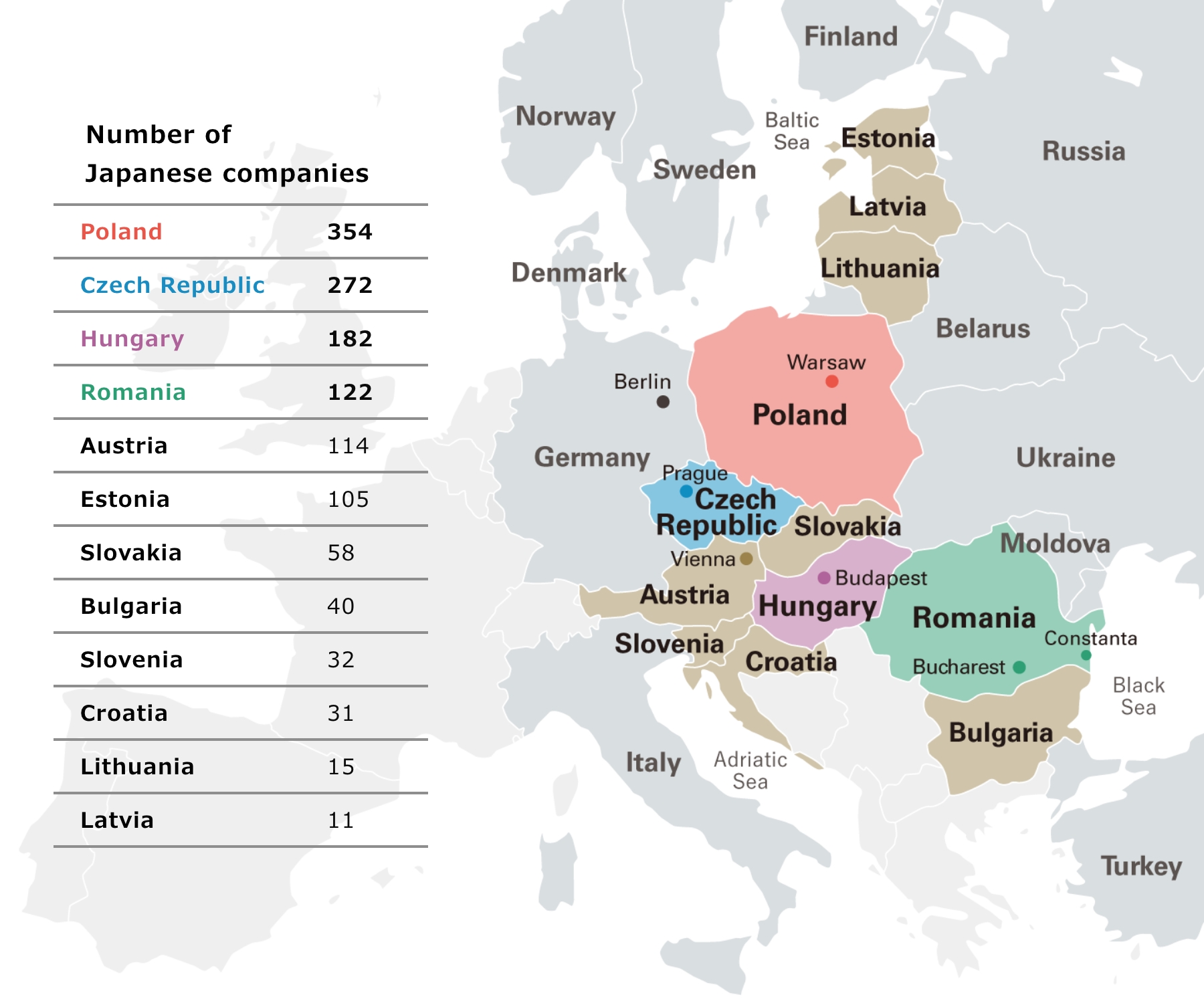
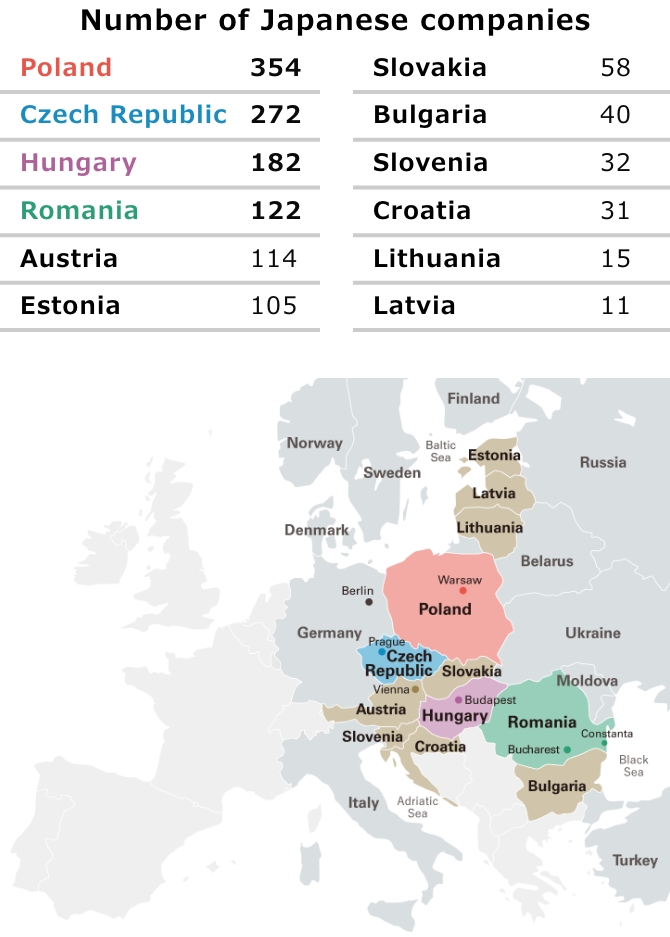
Source: Survey of Japanese businesses operating in overseas locations, Ministry of Foreign Affairs of Japan (as of Oct. 1, 2022)
The 12 countries combined cover an area that is about three times the size of Japan, and home to some 110 million people. Their economies account for 14 percent of the EU’s GDP. “The region’s economy is surging, approximately tripling over the 20 years or so since the countries joined the EU following their transition to democracy. Although it is a latecomer from the perspective of economic development, I believe this region is becoming ever more important.”
According to IMAI, territorial unions and dissolutions occurred repeatedly over the long history of the CEE region, making for a complex mix of ethnicity, religion, history, and culture. But when it comes to economics, the countries of this region have three characteristics in common: relatively low-cost labor force, industrial strength, and the quality of human resources.
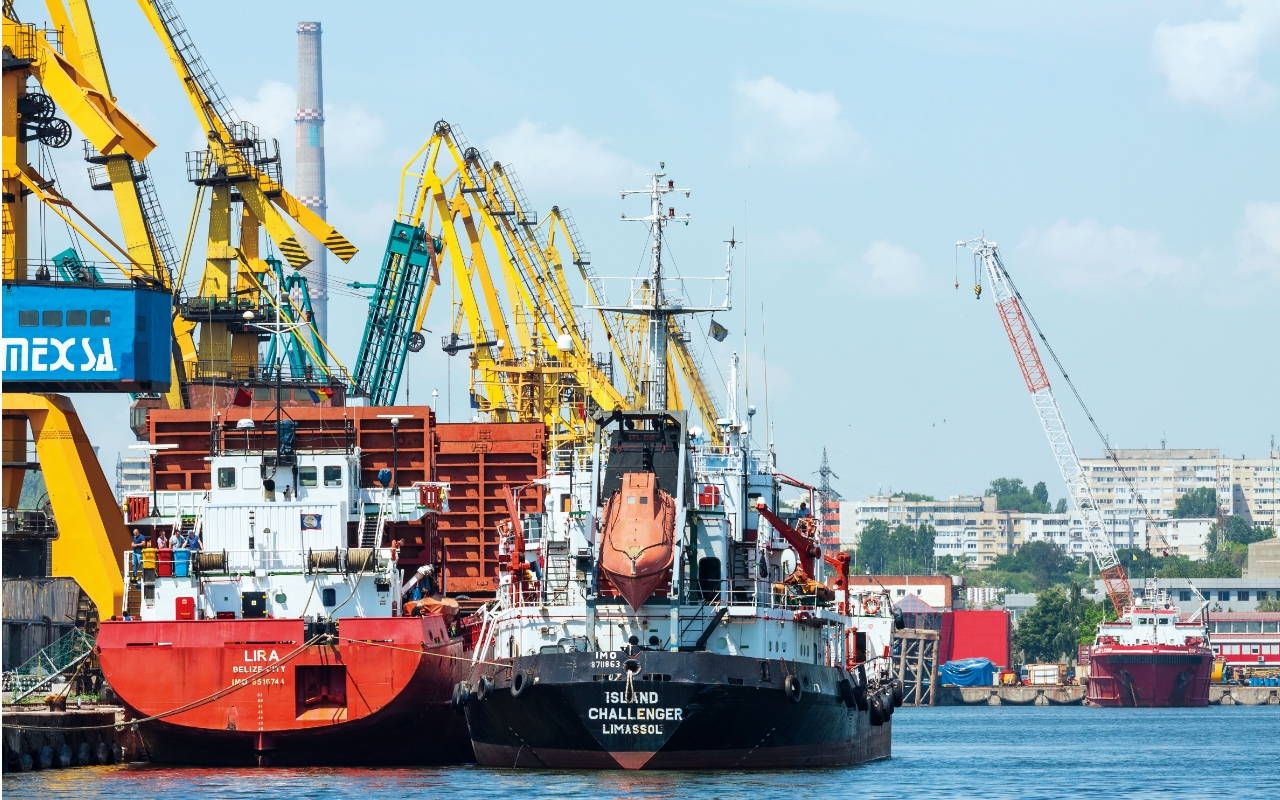
Romania’s largest trade port, Constanta, located on the Black Sea, symbolizes the economic growth of the Central and Eastern Europe region.
“Against the backdrop of quality, inexpensive labor, from the 1990s, German and Japanese automakers began setting up operations in Hungary, Poland, and what was then Czechoslovakia. This buildup of the machinery industry, including automobiles, continued into the 2000s.”
Gathering not only automakers, but also manufacturers making various auto parts such as engine-related components, seats, and exhaust filters, an enormous automotive supply chain has now been formed in Europe. “Supporting this industrial strength is the quality of human resources. I often hear it said that people in the CEE are diligent and conscientious. They are dexterous with their hands and work hard to learn, and so they quickly become proficient at their jobs. There are also many who have a positive view of Japan, making this a region that is very attractive for Japanese companies.”
Environmental measures drive investments in electrical and EV-related industries
Many Japanese companies have established operations in four CEE countries: Poland, the Czech Republic, Hungary, and Romania. Not surprisingly, the largest industry is automotive. Suzuki and Toyota have production bases in Hungary and the Czech Republic, respectively. Auto parts manufacturers such as Denso, Nidec, and Yazaki Corporation also have factories in the region. They not only supply Japanese companies, but are also expanding their businesses to include OEM supply to European companies.
Four key CEE countries drive the regional economy and have deep relations with Japan
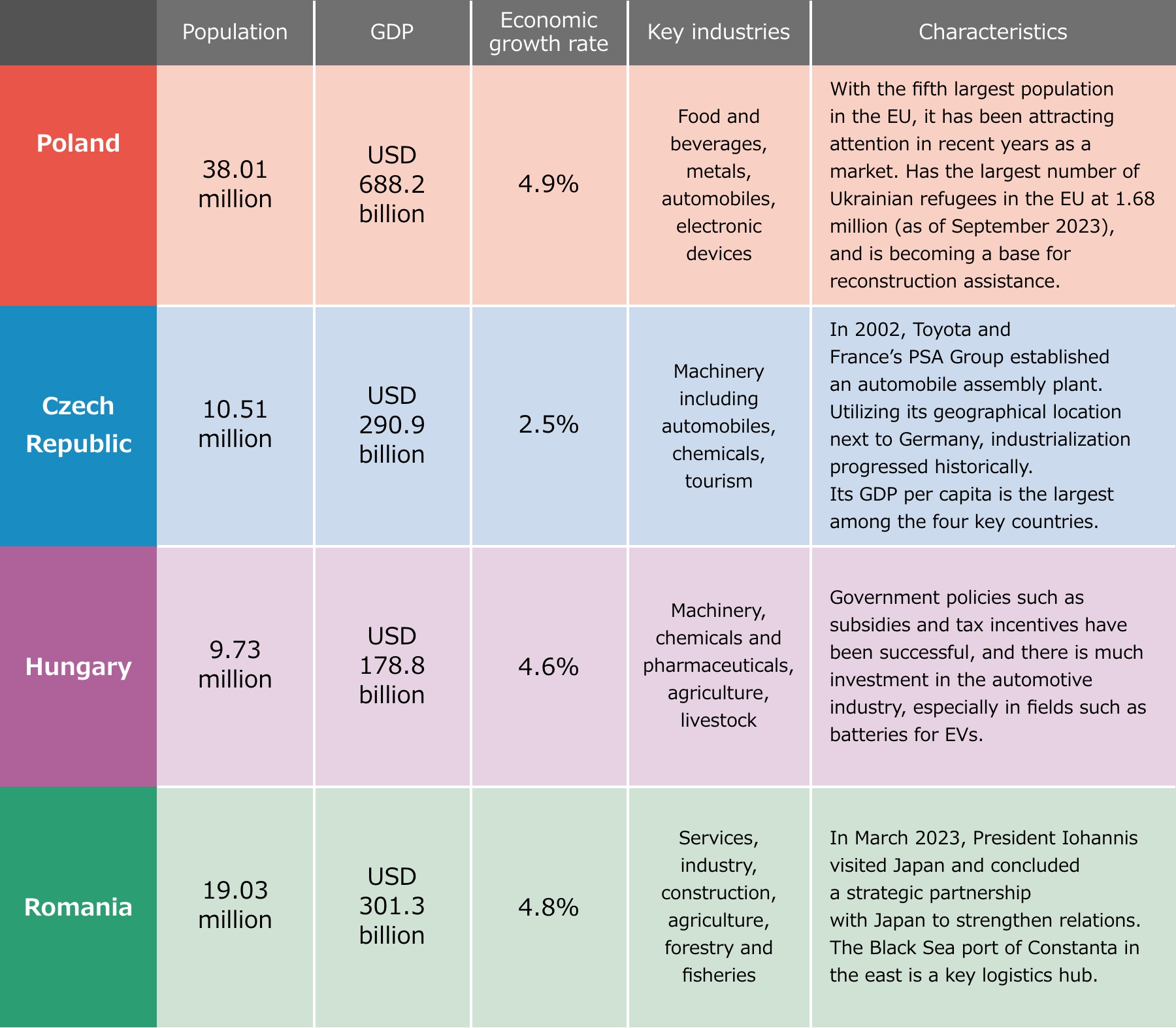

Following the automobile industry is the electrical and electronics industry, led by companies such as Daikin, Panasonic, and Mitsubishi Electric. Driven by Europe’s proactive measures for environmental protection, recent years have seen noticeable additional investment in areas related to heat pumps, which collect heat energy from the air for uses such as air conditioning and hot water supply.
A recent automobile-related trend is Europe’s shift to electric vehicles, also driven by environmental policies. Hungary, especially, has been working actively to attract EV-related factories, and German manufacturers such as the Mercedes-Benz Group, Audi AG, and BMW have set up operations in the country. In parallel with this, EV battery manufacturers are also building factory after factory. In addition to Korean companies such as Samsung SDI and SK Innovation, the world’s largest EV battery manufacturer, China’s CATL, is now constructing what will be the largest battery plant in Europe, at a cost of EUR 7.34 billion.
One reason for this advancement by manufacturers is that parts can be procured within the region, another testament to the buildup of industries over many years. “Japanese companies such as Seiren (manufacture and investment in lightweight synthetic leather seats for EVs) and Toray (manufacture of battery separator film) are also expanding their investments in response to the shift to EVs. In addition, I hear many companies saying that they have already responded to this EV shift by expanding their factories or replacing their production lines, or will be doing so in the near future.”
High skills, low cost, and entrepreneurial spirit are fueling rapid growth in the software industry
It is not that widely known in Japan yet, but other than the manufacturing industry, momentum is building in the software industry, which has been making significant developments since the beginning of the 2010s. IMAI explains this while touching on this region’s history of producing famous scientists, such as Poland’s Copernicus and Marie Curie, and Romania’s Henri Coandă, the father of the jet engine, as one reason behind this.
“This region has a high tertiary education enrollment rate compared to its GDP, and the math and science levels are especially high. The numerous medalists in the International Mathematical Olympiad and the International Olympiad in Informatics bear witness to this fact. The CEE countries are leaders in terms of producing software engineers in Europe, and there is no shortage of young people who can speak fluent English.”
On top of this, labor costs are lower than in the U.S. and Western Europe, where wages are soaring. “Some data indicate that wages for software engineers in this region are about half that in the United Kingdom.”

Targeting this pool of math and science talent, Intel, Google and other big tech firms are also setting up R&D centers here. And some of the people who have worked for such global companies are, in turn, starting up their own businesses. Because of their limited financial resources, these startups also find this region attractive as they can secure highly skilled personnel at a low cost.
In fact, about 30 unicorn companies have emerged in the CEE, some of which have gone public with market capitalization of more than USD 10 billion. With a historical background of industry concentration, many of the startups across this region offer B2B solutions for the manufacturing industry, but these unicorns also cover fields such as game development, e-commerce, cryptocurrency, and fintech.
“There is a palpable spirit of entrepreneurship here. This region still has memories of the transition from socialist regimes around 1990, and similar to postwar Japan, there are many who wish to reinvigorate their country through economic growth. In that sense, there is probably quite a thirst for success here. In addition, since the CEE market is not very large, many entrepreneurs are strongly focused on expansion into overseas markets. A cycle of giving back is also building, in which entrepreneurs who were able to achieve a successful exit in the U.S. return to their home countries to support the next generation of entrepreneurs.”
Inflation driven by the Ukraine invasion, while the EU bolsters decarbonization policies
Since democratization, the CEE has enjoyed long-term stable growth, but a large shadow has been cast on this region by Russia’s invasion of Ukraine, which began in February 2022. Before the invasion, the four major countries had been posting GDP growth of around 5 percent, but in most of these countries that is expected to drop to below 1 percent in 2023. The major reason is inflation caused by energy dependence on Russia.
“The CEE is more dependent on Russian energy resources than Western Europe, and the Russian invasion of Ukraine caused crude oil, natural gas, coal, and other fuel prices to soar. Economic growth slowed due to higher procurement costs and sluggish consumption.” Inflation in this region was higher than the EU average, with many CEE countries recording rates of 10 percent or more in 2022. This surpassed 15 percent in some countries such as Lithuania.
In the case of natural gas, for example, 10 of the 12 CEE countries were more dependent on Russia than the EU average. Suddenly forced to rethink its dependence on Russia, the region needs to not only change where it procures its energy resources, but to also accelerate switching to renewable energy sources and improving energy efficiency.
Based on the policy package, “Fit for 55,” which aims for a 55 percent reduction of greenhouse gas emissions by 2030, the EU has also initiated the REPowerEU plan to shift away from dependence on Russia, and is promoting more efficient use of energy through heat pumps and other such technologies, as well as the further introduction of renewable energy sources.

IMAI sees this trend as also a commercial opportunity for Japanese companies. “Japanese companies have always been strong in energy-saving technologies such as heat pumps, as well as interconnector projects with submarine cables for offshore wind farms. In addition, amid a modal shift in cargo transportation from trucks and other vehicles to rail, which has less environmental impact, business opportunities can also be anticipated in the rail sector to enhance connectivity among the CEE countries.”
Since spring 2023, inflation has been subsiding and there are signs of an upturn in economic growth. Central and Eastern Europe, which has a competitive labor force, industrial strength, and quality human resources that are rooted in its deep history, is already taking steps toward the next era.
IMAI says, “I want Japanese companies of all sectors to take note of this region, and to come here sometime soon to feel its dynamism. JBIC will be happy to provide support.”


JBIC Representative Office in Paris
Representative
IMAI Minami
Joined the bank in 2016. After engaging in fund investment operations in the Equity Investment Department and public relations work in the Corporate Planning Department’s Press and External Affairs Division, she assumed her current position in 2020. She is involved in shaping projects in continental Europe and French-speaking Africa. Graduated from the University of Tokyo, College of Arts and Sciences.








